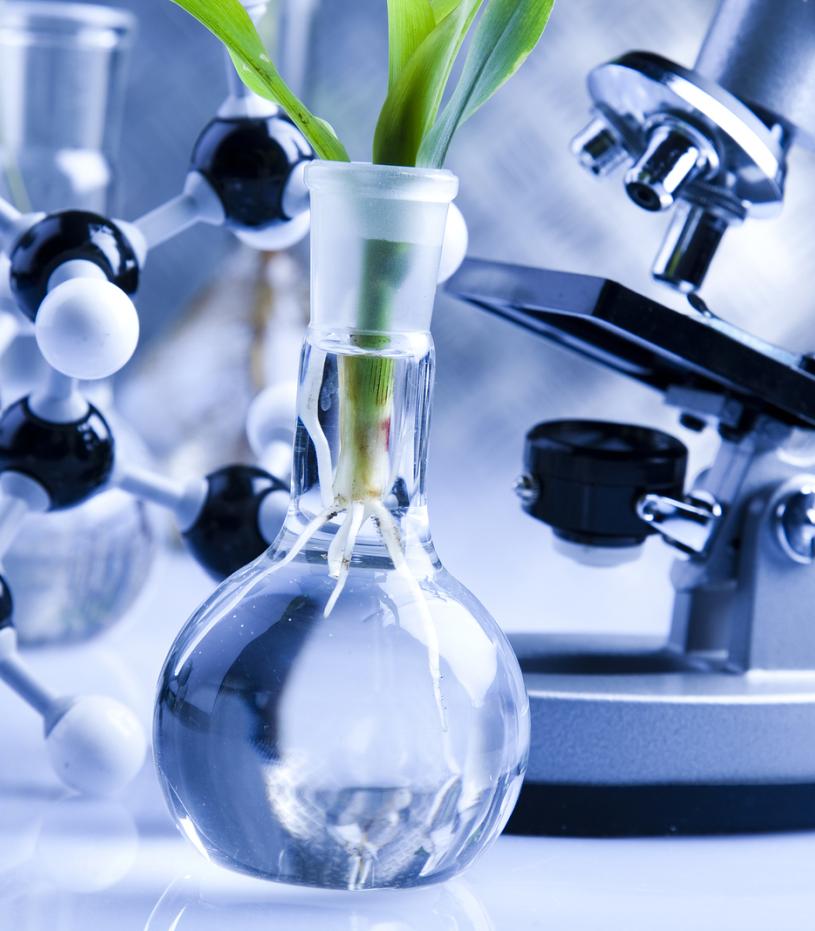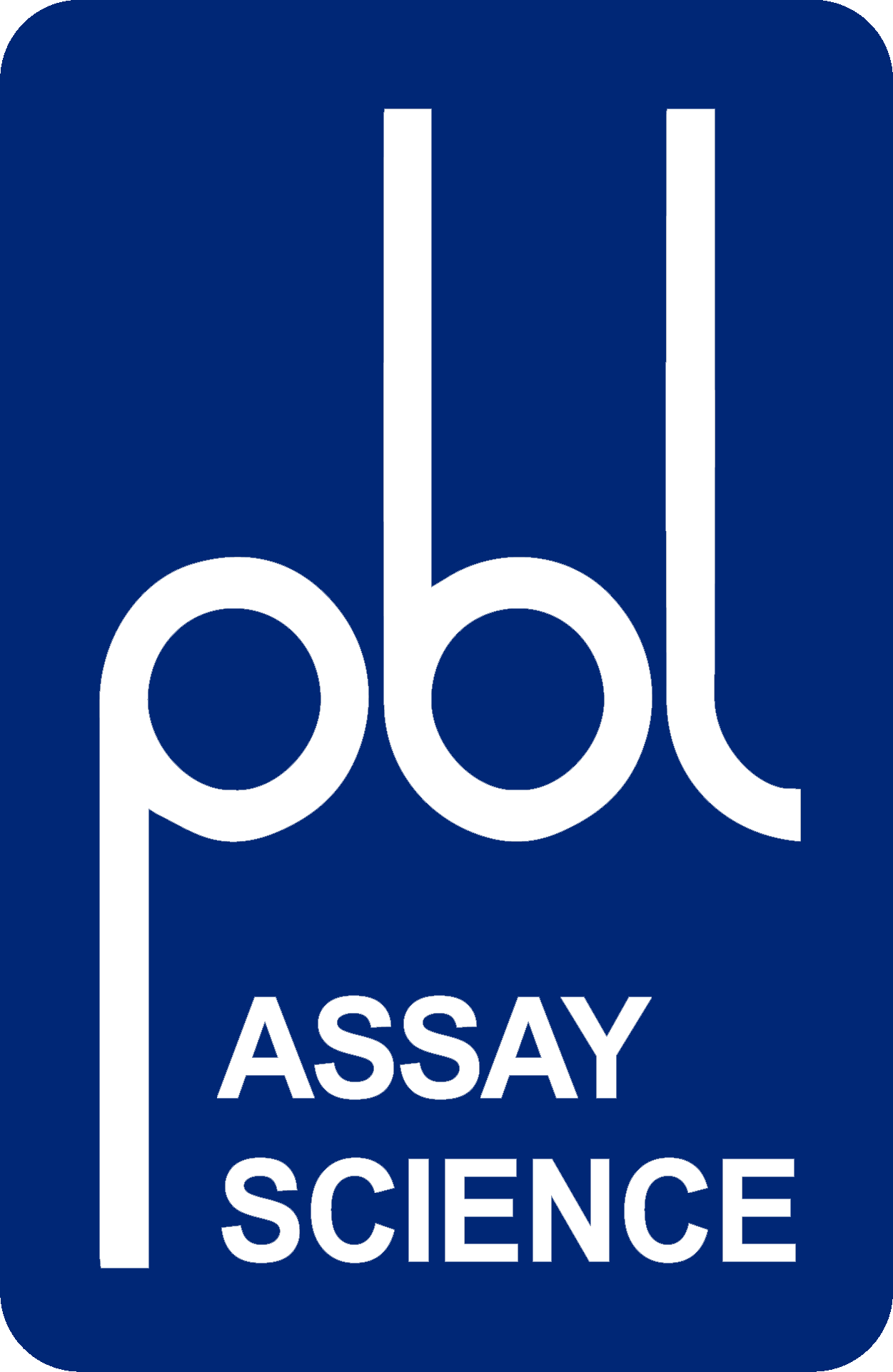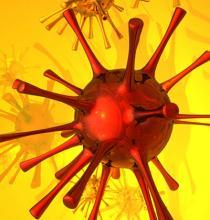When a host is presented with a novel virus for which an adaptive immune response has not previously been established, the success of the innate immune response is critical. Central to innate immunity are the functions of type I IFN, which mediates key anti-viral and immunomodulatory effects. Early in the pandemic, it became clear that an inappropriate type I IFN response may underlie much of the pathology of COVID-19. An insufficient early type I IFN response is believed to cause the subsequent cytokine storm in some patients. While many viral infections can result in a cytokine storm, it is becoming appreciated that each pathogen produces a different cytokine milieu. Infection with SARS-CoV-2 results in a marked increase in IL-6, IL-1b, IP-10, TNF, IFN-gamma, MIP1α and β, and VEGF during the late stage of the disease. Of these, increased IL-6 levels have been found to be predictive of shorter patient survival and therapeutic approaches have included a blockade of this pathway3. Further, hyperinflammation from activation of monocytes, macrophages, and NK cells driven by these cytokines has been postulated to be a large part of the etiology of severe COVID-194.
Currently, few therapies are available for COVID-19. Fully approved and EUA treatments include, dexamethasone, Remdesivir, alpha-IL-6R antibody, anti-spike protein monoclonals such as bamlanivimab and convalescent plasma. In addition, type I IFN has also been used as a treatment option with somewhat limited success indicating the likely need for early administration. Some early studies suggest positive outcomes of IFN treatment in hospitalized patients; however, it should be noted that, as in many early COVID-19 studies, the inclusion criteria of these studies resulted in a younger study population with fewer comorbidities, which may have skewed the results6,7. A more recent study with the administration of IFN by inhaled delivery suggests this approach may be superior to injection for the treatment of respiratory infections as it allows sufficiently high quantities of IFN to be delivered directly to the lung. As a result of this delivery, the local anti-viral response is enhanced and many adverse side effects caused by systemic exposure to IFN are avoided8. For future therapeutic trials, it will be important to monitor patient disease state to categorize patients into subgroups and administer the correct therapy at the appropriate time.
Although gastrointestinal symptoms are common at the onset of COVID-19 and the viral receptor, ACE2, is expressed in intestinal epithelial cells at levels reportedly higher than that in respiratory cells10, infection and replication of SARS-CoV-2 in the intestine has been controversial. However, intestinal biopsies have confirmed virus replication in endothelial cells of the small and large intestines11. Primary human intestinal epithelial cells (hIECs) produce type III IFN in response to infection with SARS-CoV-2 and this cytokine is indicated in the control of infection of hIECs12. While both type I and III IFN were found to inhibit virus replication in primary hIECs, only type III IFN was found to be induced upon SARS-CoV-2 infection of these cells. This suggests that in the gut, type III IFN is the predominant actor. Further, to combat the spread of SARS-CoV-2, transmission via-fecal-oral route should not be ignored and for treatment of COVID-19, IFN-lambda, which has fewer side effects than type I IFN, should be considered.
A major difficulty in treating COVID-19 is determining where each patient will eventually fall on the wide spectrum of disease. Investigation of the SARS-CoV-2 virus itself, as well as earlier studies on related viruses, revealed several mechanisms these viruses utilize to inhibit IFN. SARS-CoV-2 is a positive-sense, single-stranded RNA virus of 30 kb that encodes 16 nonstructural proteins involved in replication (nsp-16), 4 structural proteins (spike, envelope, membrane, nucleocapsid), and 8 accessory proteins for modulating the host response (ORF3a, ORF3b, ORF6, ORF7a ORF7b, ORF8, ORF9b, and ORF10). In particular, the accessory proteins have been feverishly studied for clues as to the mechanisms underlying the variation in host immune responses. While further study will be needed utilizing a reverse genetics approach to define the precise mechanisms, preliminary results indicate that there may be virally controlled inhibition at multiple steps of the pathway leading to IFN production as well as inhibition of the effects downstream of IFN signaling. One of the most interesting mechanisms of type I IFN inhibition by SARS-CoV-2 is the inhibition of mRNA translation by Nsp1 (the host shutoff factor), which sits on the ribosome effectively blocking all protein translation and thereby, inhibiting the expression of interferon response genes (ISGs)13. In addition, Nsp3 may function as a protease or deubiquitinase to inhibit IFN and Nsp6; and Nsp13 appear to inhibit production of IFN by blocking activation of IRF3 downstream of TBK1. Coronavirus structural and accessory proteins, including N, M, ORF6, ORF7a and ORF7b, ORF8, and ORF9b have all shown the ability to inhibit this pathway in vitro14. More work is required to determine the importance of each of these viral proteins and define their mechanism of action. A reverse genetic approach and reporter viruses may allow for scalable and rapid analysis of viral mutants and potential therapeutics.
In the search for factors to explain the disparate degrees of disease caused by COVID-19, inborn errors of type I IFN were investigated by Bastard et al. In their study they found IgG autoantibodies against IFN in 10.2% of severe COVID-19 patients and only 0.33% of controls. Strikingly, 94% of these patients were male, which may account for the increased risk of severe disease in older males compared to females. In addition, the presence of IFN neutralizing antibodies in these patients is believed to have preceded disease onset and may be an X-linked trait. Because these antibodies were against Interferon alpha 2 and/or Interferon omega, administration of Interferon beta could be a viable therapeutic approach if delivered early in the disease course. Screening patients for these antibodies or for interferon production upon acute infection can allow identification of those at risk for severe disease2.
While great strides have been made to increase understanding of the pathology associated with SARS-CoV-2 infection and treatments, there is still much to uncover. As the first cytokines discovered due to their ability to strongly interfere with viral replication, the function of IFN may be central to the pathology of this novel coronavirus disease. Further analysis of the roles of IFN, its potential therapeutic applications, and inborn genetic predispositions to severe disease may further understand the multiphasic nature of COVID-19 and the wide variance in human responses to this and other infections.
References:
-
Greenhalgh T. et al., "Management of post-acute covid-19 in primary care", BMJ., 2020, doi:10.1136/bmj.m3026
-
Bastard P. et al., "Autoantibodies against type I IFNs in patients with life-threatening COVID-19", Science, 2020, doi:10.1126/science.abd4585
-
Fajgenbaum DC., June CH., "Cytokine Storm", N. Engl J Med, 2020. doi:10.1056NEJMra2026131
-
Rodrigues PRS, et al., "Innate immunology in COVID-19 -- a living review. Part II: dysregulated inflammation drives immunopathology", Oxford Open Immunol., 2020, doi:10.1093/oxfimm/iqaa005
-
Haznedaroglu IC, "Immunogenomic phases of COVID-19 and appropriate clinical management", The Lancet Microbe, 2020, doi:10.1016/s2666-5247(20)30165-8
-
Zhou Q, et al., "Interferon-α2b Treatment for COVID-19", Front Immunol., 2020, doi:10.3389/fimmu.2020.01061
-
Pereda R. et al., "Therapeutic effectiveness of interferon-α2b against COVID-19. The Cuban experience", J. Interf Cytokine Res., 2020, doi:10.1089/jir.2020.0124
-
Monk PD, et al, "Safety and efficacy of inhaled nebulised interferon beta-1a (SNG001) for treatment of SARS-COV-2 infection: a randomised, double-blind, placebo-controlled, phase 2 trial", Lancet Respir Med., 2020, doi:10.1016/s2213-2600(20)30511-7
-
NIH. No Title. https://www.covid19treatmentguidelines.nih.gov/immune-based-therapy/blood-derived-products/convalescent-plasma/
-
Xu H, et al., "High expression of ACE2 receptor of 2019-nCoV on the epithelial cells of oral mucosa", int J Oral Sci, 2020, doi:10.1038/s41368-020-0074-x
-
Xiao F. et al, "Evidence for Gastrointestinal Infection of SARS-CoV-2" Gastroenterology, 2020, doi:10.1053/j.gastro.2020.02.055
-
Stanifer ML, et al, "Critical Role of Type III Interferon in Controlling SARS-CoV-2 Infection in Human Intestinal Epithelial Cells", Cell Rep., 2020, doi:10.1016/j.celrep.2020.107863
-
Schubert K, et al, "SARS-CoV-2 Nsp1 binds the ribosomal mRNA channel to inhibit translation", Nat Struct Mol Biol., 2020, doi:10.1038/s41594-020-0511-8
-
Xia H, Shi P-Y, "Antagonism of Type I Interferon by Severe Acute Respiratory Syndrome Coronavirus 2", J Interf Cytokine Res., 2020, doi:10.1089/jir.2020.0214
When a host is presented with a novel virus for which an adaptive immune response has not previously been established, the success of the innate immune response is critical. Central to innate immunity are the functions of type I IFN, which mediates key anti-viral and immunomodulatory effects. Early in the pandemic, it became clear that an inappropriate type I IFN response may underlie much of the pathology of COVID-19. An insufficient early type I IFN response is believed to cause the subsequent cytokine storm in some patients. While many viral infections can result in a cytokine storm, it is becoming appreciated that each pathogen produces a different cytokine milieu. Infection with SARS-CoV-2 results in a marked increase in IL-6, IL-1b, IP-10, TNF, IFN-gamma, MIP1α and β, and VEGF during the late stage of the disease. Of these, increased IL-6 levels have been found to be predictive of shorter patient survival and therapeutic approaches have included a blockade of this pathway3. Further, hyperinflammation from activation of monocytes, macrophages, and NK cells driven by these cytokines has been postulated to be a large part of the etiology of severe COVID-194.
Currently, few therapies are available for COVID-19. Fully approved and EUA treatments include, dexamethasone, Remdesivir, alpha-IL-6R antibody, anti-spike protein monoclonals such as bamlanivimab and convalescent plasma. In addition, type I IFN has also been used as a treatment option with somewhat limited success indicating the likely need for early administration. Some early studies suggest positive outcomes of IFN treatment in hospitalized patients; however, it should be noted that, as in many early COVID-19 studies, the inclusion criteria of these studies resulted in a younger study population with fewer comorbidities, which may have skewed the results6,7. A more recent study with the administration of IFN by inhaled delivery suggests this approach may be superior to injection for the treatment of respiratory infections as it allows sufficiently high quantities of IFN to be delivered directly to the lung. As a result of this delivery, the local anti-viral response is enhanced and many adverse side effects caused by systemic exposure to IFN are avoided8. For future therapeutic trials, it will be important to monitor patient disease state to categorize patients into subgroups and administer the correct therapy at the appropriate time.
Although gastrointestinal symptoms are common at the onset of COVID-19 and the viral receptor, ACE2, is expressed in intestinal epithelial cells at levels reportedly higher than that in respiratory cells10, infection and replication of SARS-CoV-2 in the intestine has been controversial. However, intestinal biopsies have confirmed virus replication in endothelial cells of the small and large intestines11. Primary human intestinal epithelial cells (hIECs) produce type III IFN in response to infection with SARS-CoV-2 and this cytokine is indicated in the control of infection of hIECs12. While both type I and III IFN were found to inhibit virus replication in primary hIECs, only type III IFN was found to be induced upon SARS-CoV-2 infection of these cells. This suggests that in the gut, type III IFN is the predominant actor. Further, to combat the spread of SARS-CoV-2, transmission via-fecal-oral route should not be ignored and for treatment of COVID-19, IFN-lambda, which has fewer side effects than type I IFN, should be considered.
A major difficulty in treating COVID-19 is determining where each patient will eventually fall on the wide spectrum of disease. Investigation of the SARS-CoV-2 virus itself, as well as earlier studies on related viruses, revealed several mechanisms these viruses utilize to inhibit IFN. SARS-CoV-2 is a positive-sense, single-stranded RNA virus of 30 kb that encodes 16 nonstructural proteins involved in replication (nsp-16), 4 structural proteins (spike, envelope, membrane, nucleocapsid), and 8 accessory proteins for modulating the host response (ORF3a, ORF3b, ORF6, ORF7a ORF7b, ORF8, ORF9b, and ORF10). In particular, the accessory proteins have been feverishly studied for clues as to the mechanisms underlying the variation in host immune responses. While further study will be needed utilizing a reverse genetics approach to define the precise mechanisms, preliminary results indicate that there may be virally controlled inhibition at multiple steps of the pathway leading to IFN production as well as inhibition of the effects downstream of IFN signaling. One of the most interesting mechanisms of type I IFN inhibition by SARS-CoV-2 is the inhibition of mRNA translation by Nsp1 (the host shutoff factor), which sits on the ribosome effectively blocking all protein translation and thereby, inhibiting the expression of interferon response genes (ISGs)13. In addition, Nsp3 may function as a protease or deubiquitinase to inhibit IFN and Nsp6; and Nsp13 appear to inhibit production of IFN by blocking activation of IRF3 downstream of TBK1. Coronavirus structural and accessory proteins, including N, M, ORF6, ORF7a and ORF7b, ORF8, and ORF9b have all shown the ability to inhibit this pathway in vitro14. More work is required to determine the importance of each of these viral proteins and define their mechanism of action. A reverse genetic approach and reporter viruses may allow for scalable and rapid analysis of viral mutants and potential therapeutics.
In the search for factors to explain the disparate degrees of disease caused by COVID-19, inborn errors of type I IFN were investigated by Bastard et al. In their study they found IgG autoantibodies against IFN in 10.2% of severe COVID-19 patients and only 0.33% of controls. Strikingly, 94% of these patients were male, which may account for the increased risk of severe disease in older males compared to females. In addition, the presence of IFN neutralizing antibodies in these patients is believed to have preceded disease onset and may be an X-linked trait. Because these antibodies were against Interferon alpha 2 and/or Interferon omega, administration of Interferon beta could be a viable therapeutic approach if delivered early in the disease course. Screening patients for these antibodies or for interferon production upon acute infection can allow identification of those at risk for severe disease2.
While great strides have been made to increase understanding of the pathology associated with SARS-CoV-2 infection and treatments, there is still much to uncover. As the first cytokines discovered due to their ability to strongly interfere with viral replication, the function of IFN may be central to the pathology of this novel coronavirus disease. Further analysis of the roles of IFN, its potential therapeutic applications, and inborn genetic predispositions to severe disease may further understand the multiphasic nature of COVID-19 and the wide variance in human responses to this and other infections.
References:
-
Greenhalgh T. et al., "Management of post-acute covid-19 in primary care", BMJ., 2020, doi:10.1136/bmj.m3026
-
Bastard P. et al., "Autoantibodies against type I IFNs in patients with life-threatening COVID-19", Science, 2020, doi:10.1126/science.abd4585
-
Fajgenbaum DC., June CH., "Cytokine Storm", N. Engl J Med, 2020. doi:10.1056NEJMra2026131
-
Rodrigues PRS, et al., "Innate immunology in COVID-19 -- a living review. Part II: dysregulated inflammation drives immunopathology", Oxford Open Immunol., 2020, doi:10.1093/oxfimm/iqaa005
-
Haznedaroglu IC, "Immunogenomic phases of COVID-19 and appropriate clinical management", The Lancet Microbe, 2020, doi:10.1016/s2666-5247(20)30165-8
-
Zhou Q, et al., "Interferon-α2b Treatment for COVID-19", Front Immunol., 2020, doi:10.3389/fimmu.2020.01061
-
Pereda R. et al., "Therapeutic effectiveness of interferon-α2b against COVID-19. The Cuban experience", J. Interf Cytokine Res., 2020, doi:10.1089/jir.2020.0124
-
Monk PD, et al, "Safety and efficacy of inhaled nebulised interferon beta-1a (SNG001) for treatment of SARS-COV-2 infection: a randomised, double-blind, placebo-controlled, phase 2 trial", Lancet Respir Med., 2020, doi:10.1016/s2213-2600(20)30511-7
-
NIH. No Title. https://www.covid19treatmentguidelines.nih.gov/immune-based-therapy/blood-derived-products/convalescent-plasma/
-
Xu H, et al., "High expression of ACE2 receptor of 2019-nCoV on the epithelial cells of oral mucosa", int J Oral Sci, 2020, doi:10.1038/s41368-020-0074-x
-
Xiao F. et al, "Evidence for Gastrointestinal Infection of SARS-CoV-2" Gastroenterology, 2020, doi:10.1053/j.gastro.2020.02.055
-
Stanifer ML, et al, "Critical Role of Type III Interferon in Controlling SARS-CoV-2 Infection in Human Intestinal Epithelial Cells", Cell Rep., 2020, doi:10.1016/j.celrep.2020.107863
-
Schubert K, et al, "SARS-CoV-2 Nsp1 binds the ribosomal mRNA channel to inhibit translation", Nat Struct Mol Biol., 2020, doi:10.1038/s41594-020-0511-8
-
Xia H, Shi P-Y, "Antagonism of Type I Interferon by Severe Acute Respiratory Syndrome Coronavirus 2", J Interf Cytokine Res., 2020, doi:10.1089/jir.2020.0214


